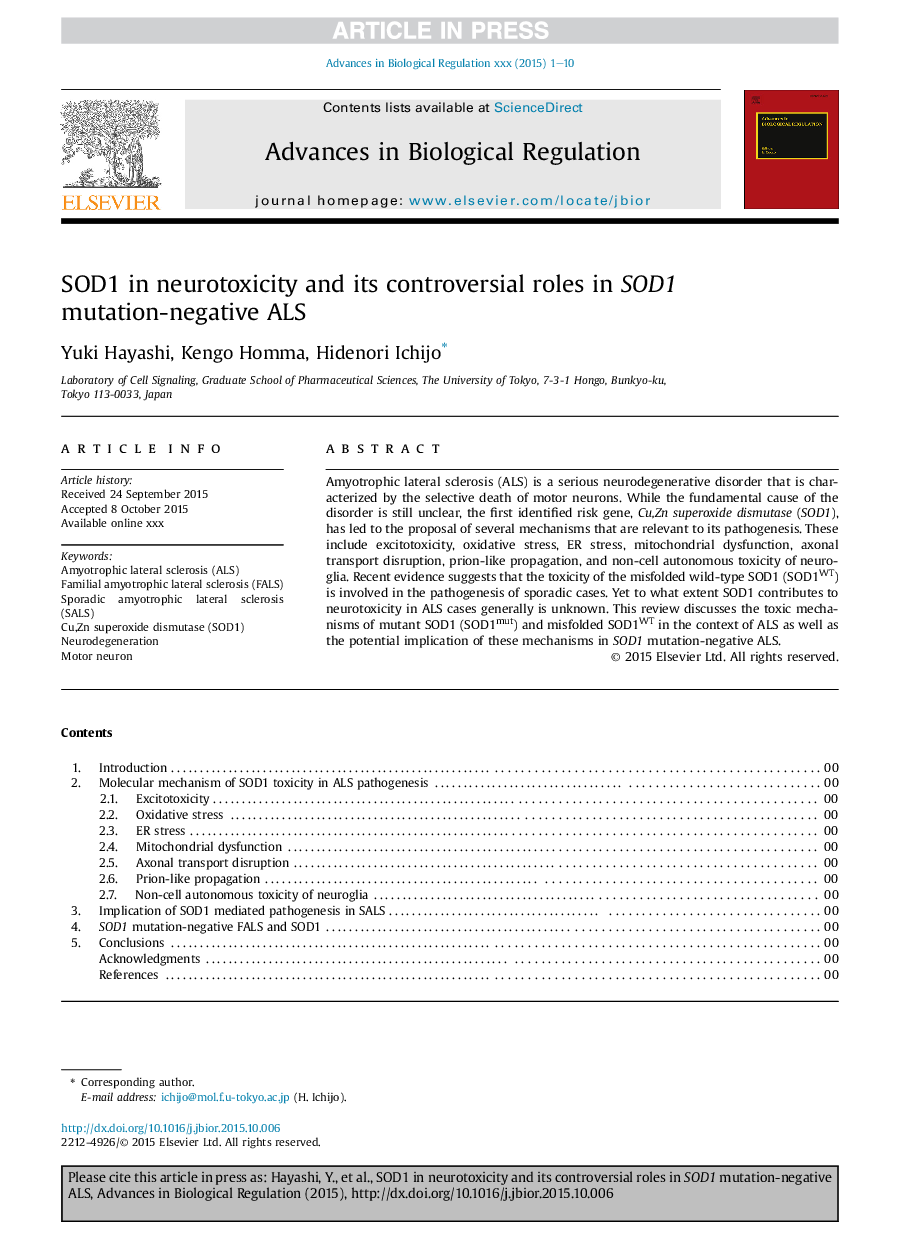| Article ID | Journal | Published Year | Pages | File Type |
|---|---|---|---|---|
| 8287972 | Advances in Biological Regulation | 2016 | 10 Pages |
Abstract
Amyotrophic lateral sclerosis (ALS) is a serious neurodegenerative disorder that is characterized by the selective death of motor neurons. While the fundamental cause of the disorder is still unclear, the first identified risk gene, Cu,Zn superoxide dismutase (SOD1), has led to the proposal of several mechanisms that are relevant to its pathogenesis. These include excitotoxicity, oxidative stress, ER stress, mitochondrial dysfunction, axonal transport disruption, prion-like propagation, and non-cell autonomous toxicity of neuroglia. Recent evidence suggests that the toxicity of the misfolded wild-type SOD1 (SOD1WT) is involved in the pathogenesis of sporadic cases. Yet to what extent SOD1 contributes to neurotoxicity in ALS cases generally is unknown. This review discusses the toxic mechanisms of mutant SOD1 (SOD1mut) and misfolded SOD1WT in the context of ALS as well as the potential implication of these mechanisms in SOD1 mutation-negative ALS.
Keywords
Related Topics
Life Sciences
Biochemistry, Genetics and Molecular Biology
Biochemistry
Authors
Yuki Hayashi, Kengo Homma, Hidenori Ichijo,
